Hello,
This is Mr. Linen.
Just two weeks after receiving my first made-to-measure three-piece suit from DORSO, I was back to commission another piece—this time, a lightweight check jacket perfect for spring and summer.
In this article, I’ll walk you through the entire process: from choosing the fabric to selecting the details, and what it’s like to order a tailored jacket from one of Tokyo’s most refined tailoring houses.
Why I Wanted a Check Jacket
Several years ago, I heard the renowned menswear expert Yukio Akamine say, “There is no pattern better than plain.” Ever since, I’ve stuck to solid fabrics only, determined not to buy anything with a pattern until I’d fully mastered plain ones.
It’s not like he said it to me personally—I just heard it on YouTube, yet I still followed it earnestly.
After gaining some experience ordering suits from various shops, I visited Atelier Berun for the first time, where I was recommended a patterned tweed jacket. I had it made as a set with corduroy trousers.
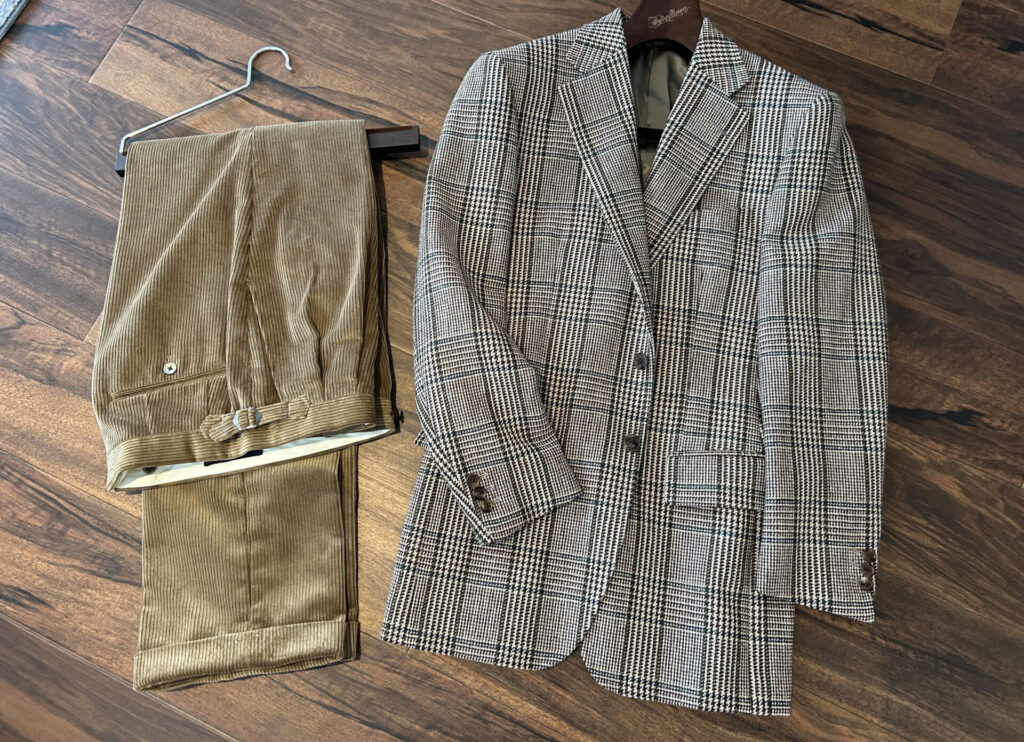
While it’s true that patterned garments are generally less versatile than solids, I found it surprisingly easy to wear. More than anything, I loved the country-inspired atmosphere it brought. Since then, I’ve found myself wanting more patterned jackets.
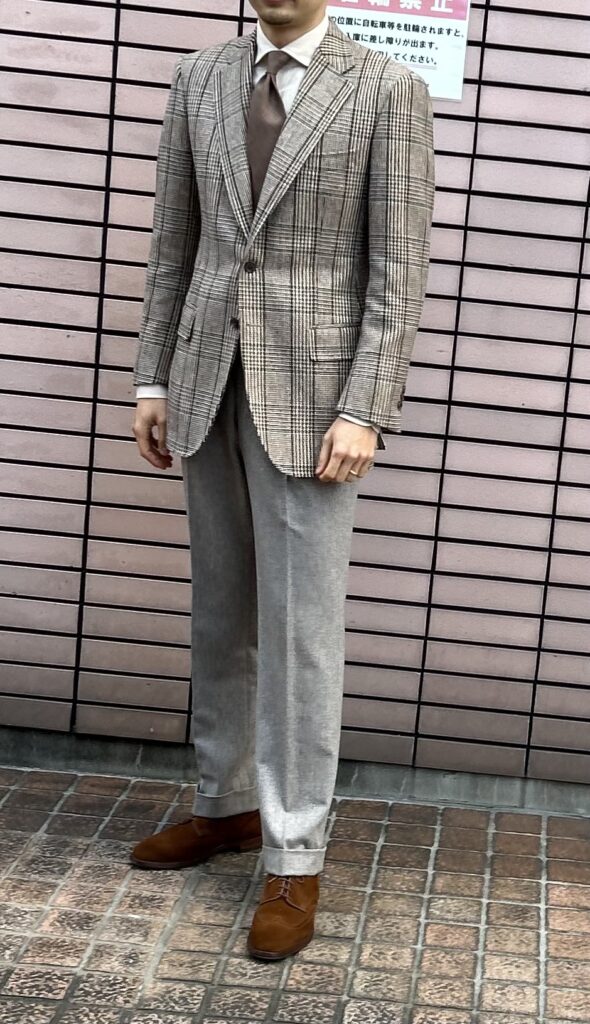
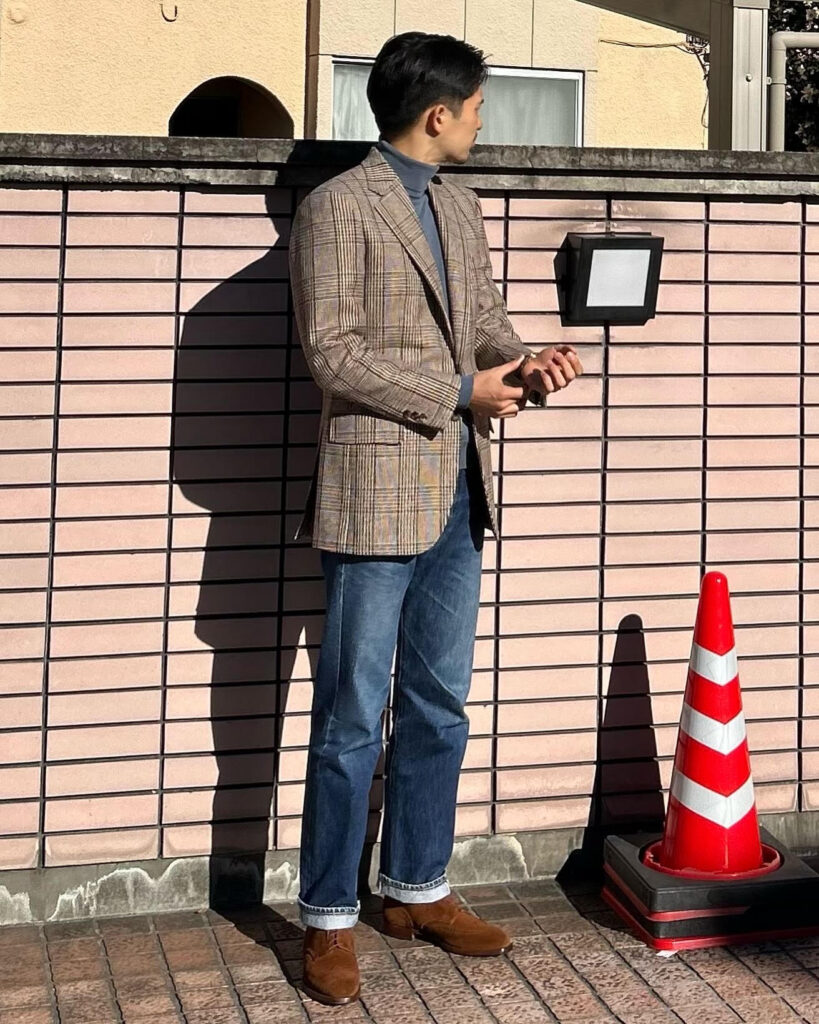
Of course, I still haven’t “mastered” solids, but I simply wanted one—so I gave in.
With countless options in terms of color and pattern, I knew it would be impossible to choose on my own. So, I made a return appointment at DORSO without selecting a fabric in advance, planning to decide with the owner, Mr. Saito’s guidance.
What Kind of Pattern to choose?
While the possibilities for patterns are endless, the same goes for the fabrics. Though I personally think patterns show best on tweed, I also love linen, so I had it in mind that I’d prefer either linen or tweed.
During our conversation, Mr. Saito mentioned he tends to favor more refined fabrics—fine wools, or those blended with luxurious fibers like silk and cashmere.
In contrast, I tend to gravitate toward tougher, more durable fabrics that age well over time.
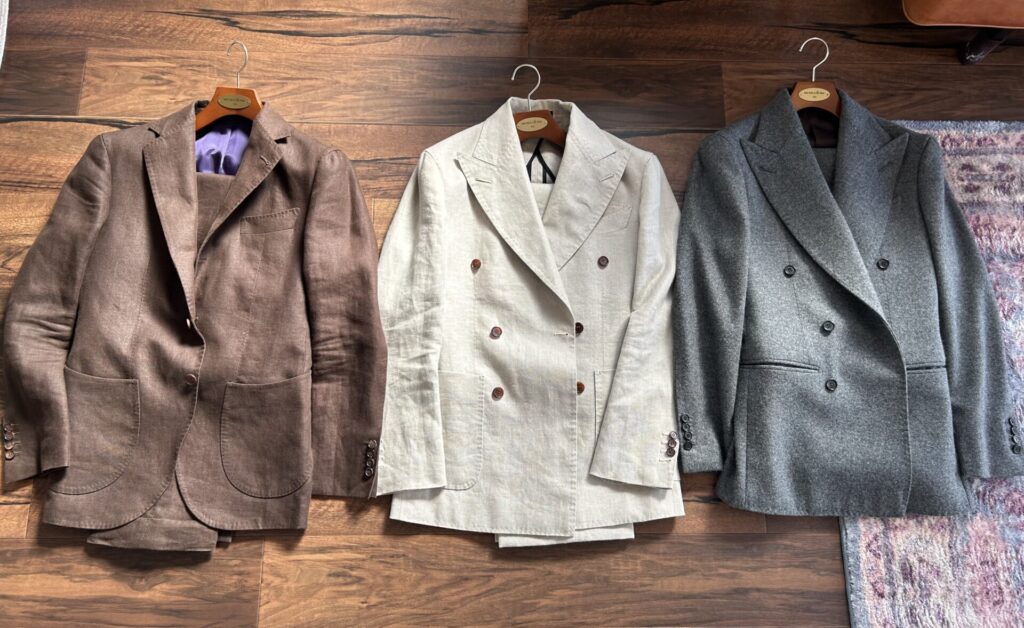
That said, I believe that trying fabrics I’ve never worn before can open up new perspectives. So I try not to be picky, and I’m open to trying fabrics recommended by tailors I trust.
In fact, the first three-piece suit I had made at DORSO was cut from a DRAPERS cloth—an Italian, rather refined fabric. I chose it upon Mr. Saito’s recommendation and was very happy with it.
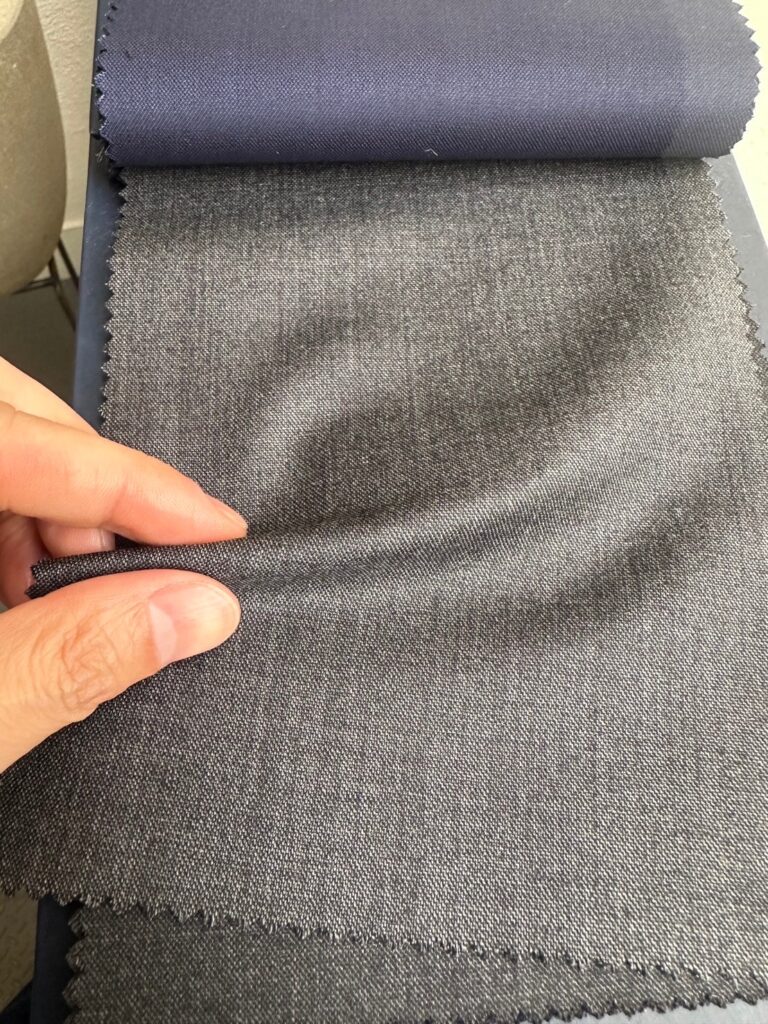
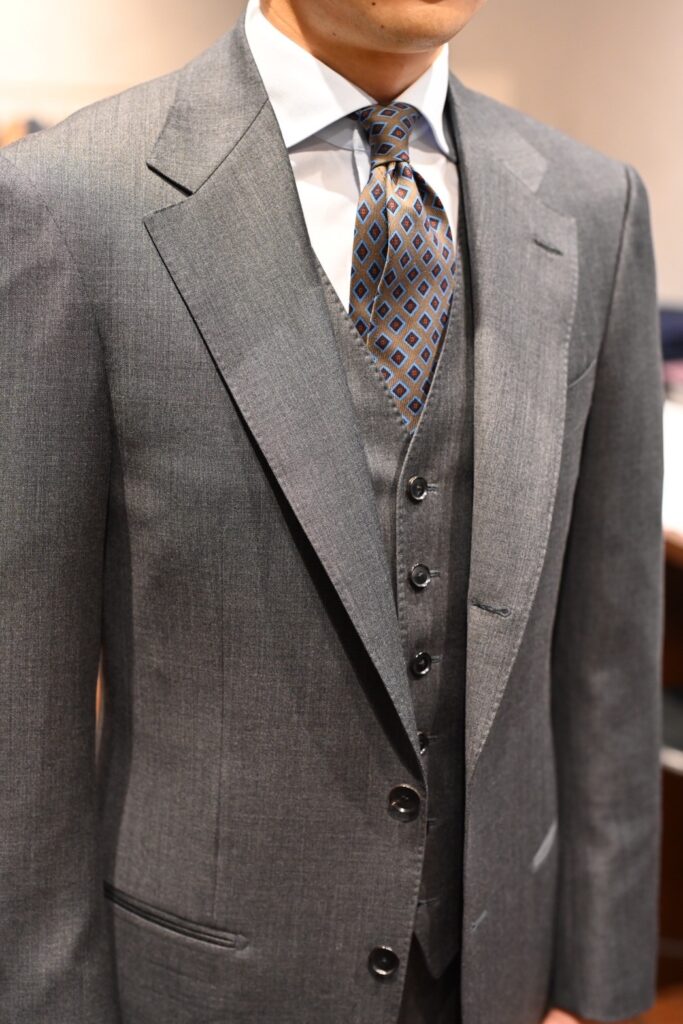
So, after sharing my preferences—something durable, ideally linen or tweed—he showed me a few options.
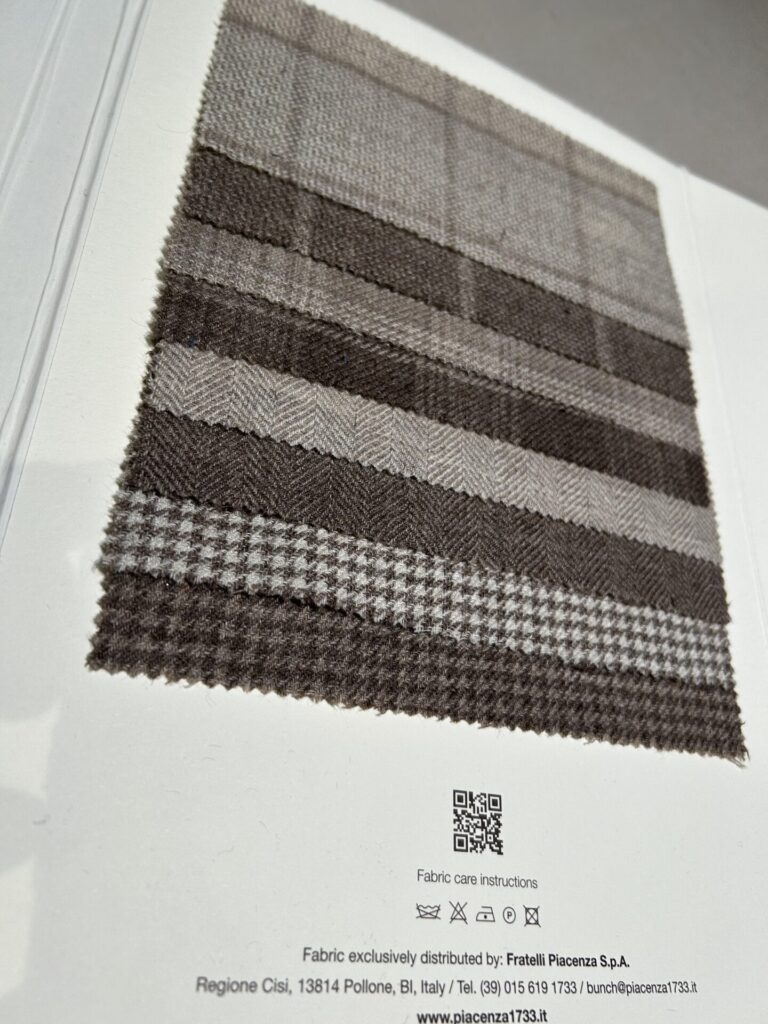
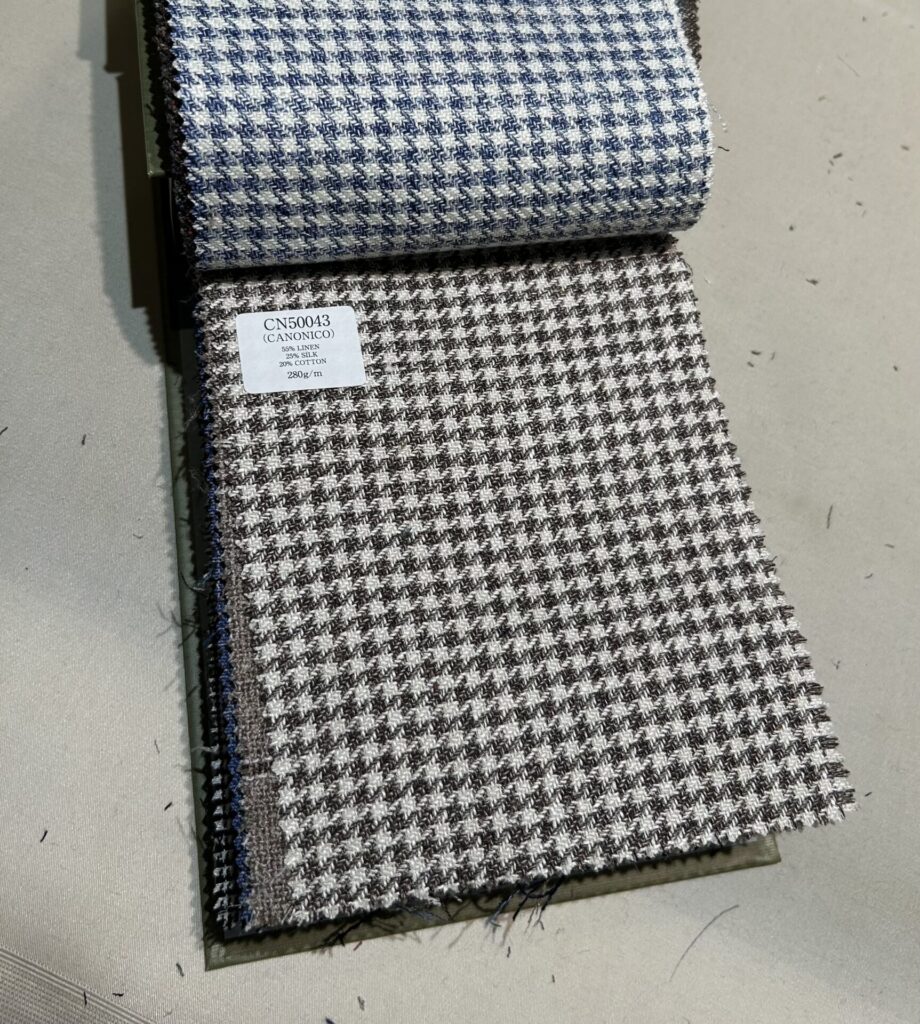
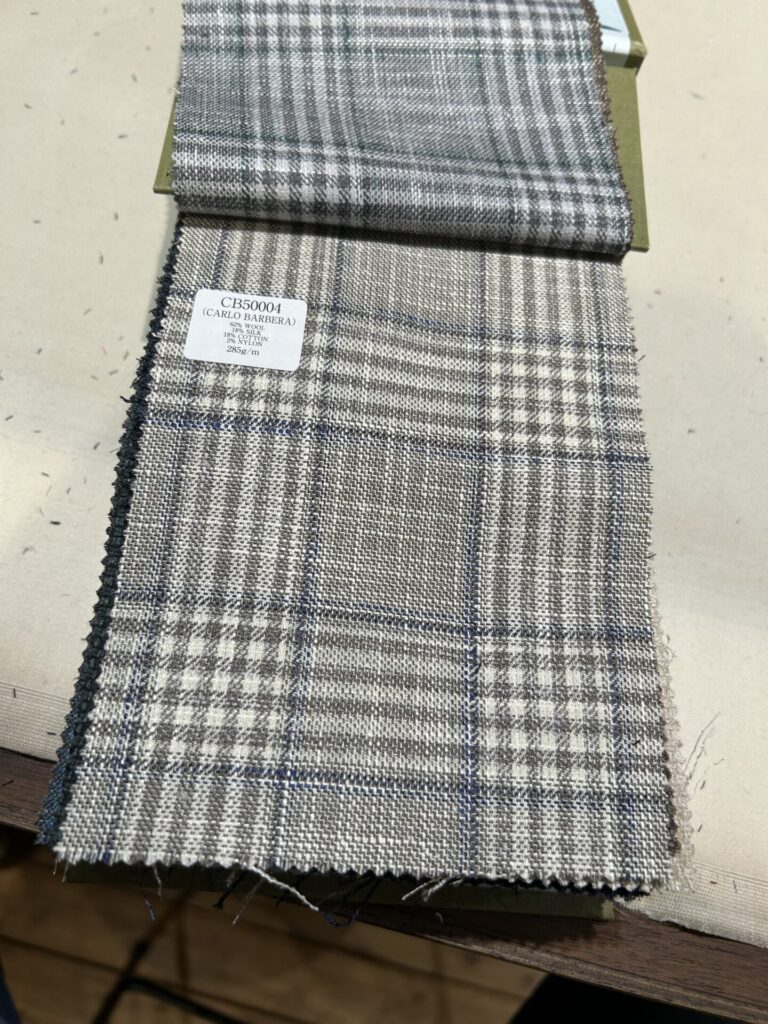
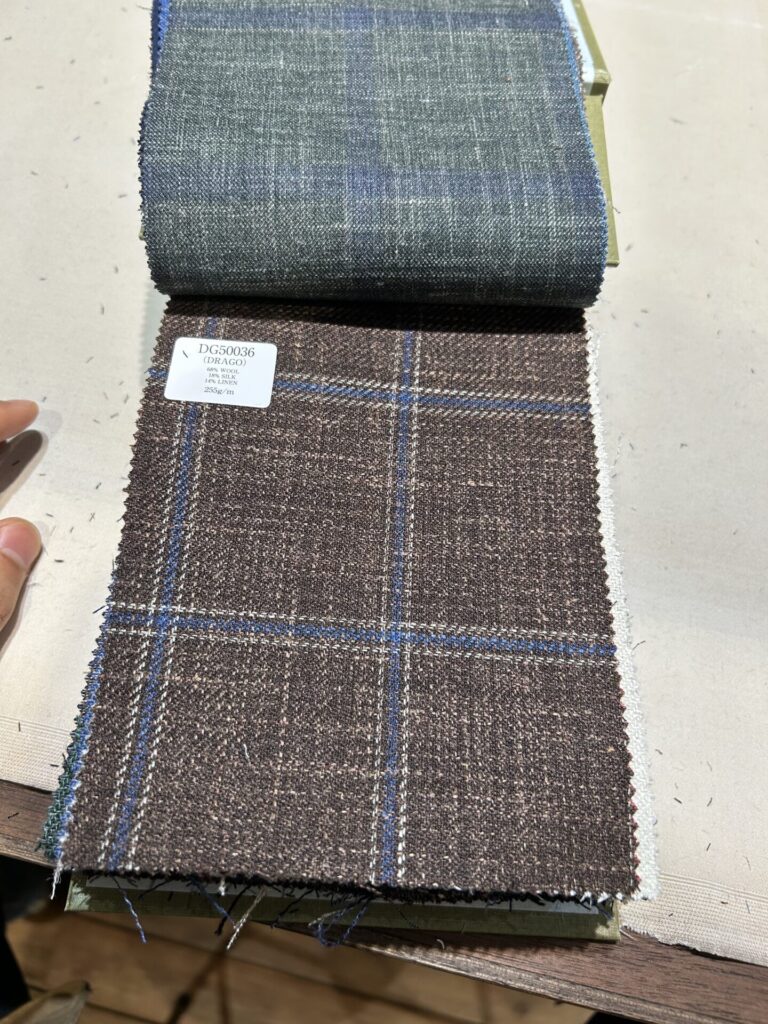
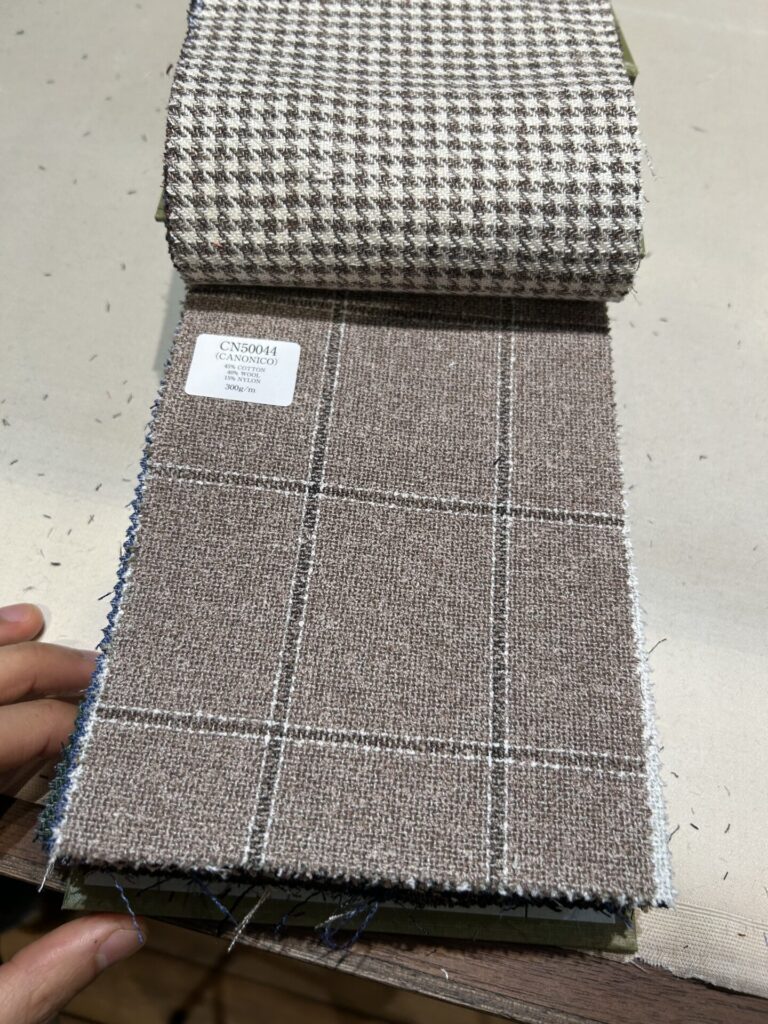
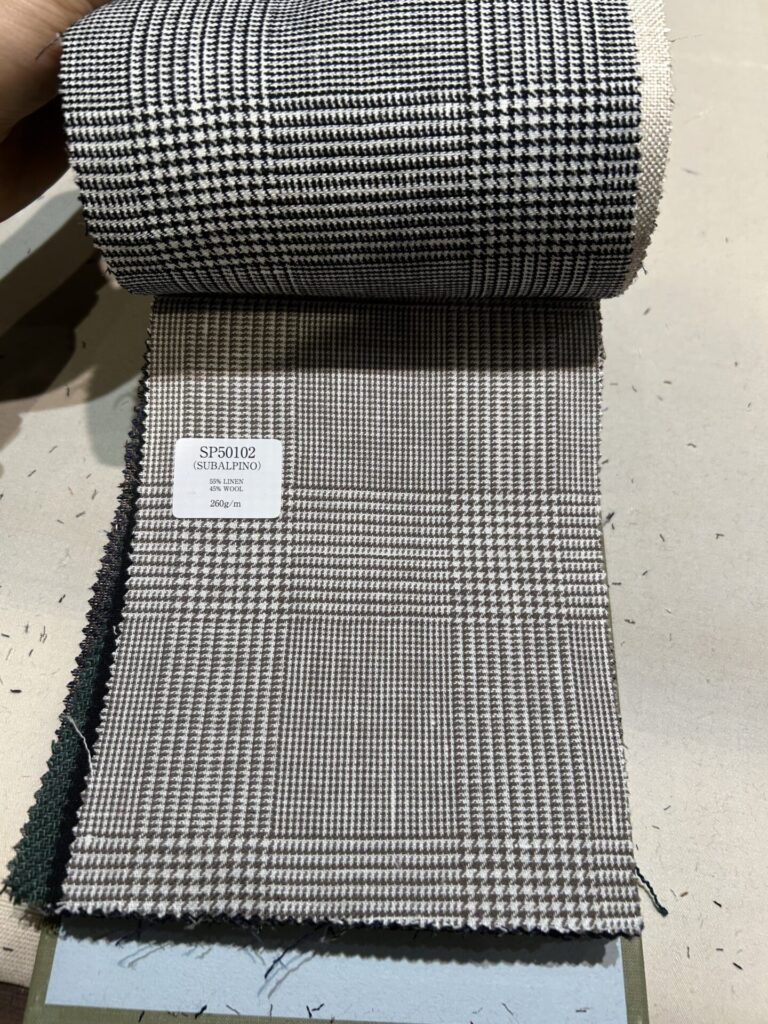
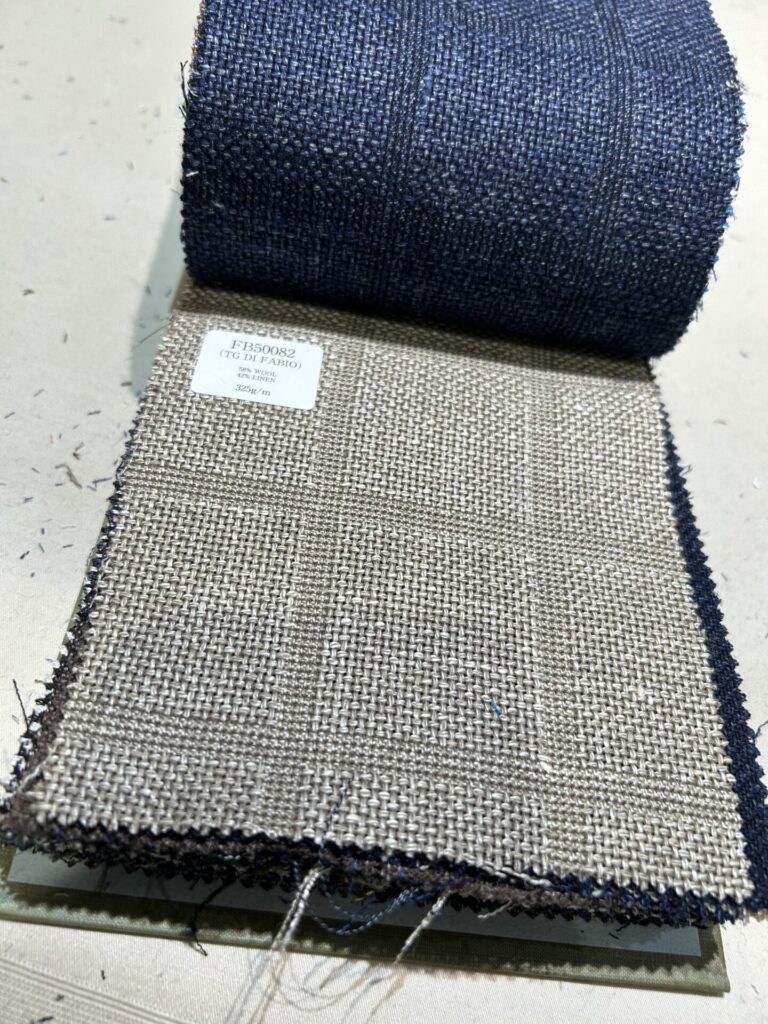
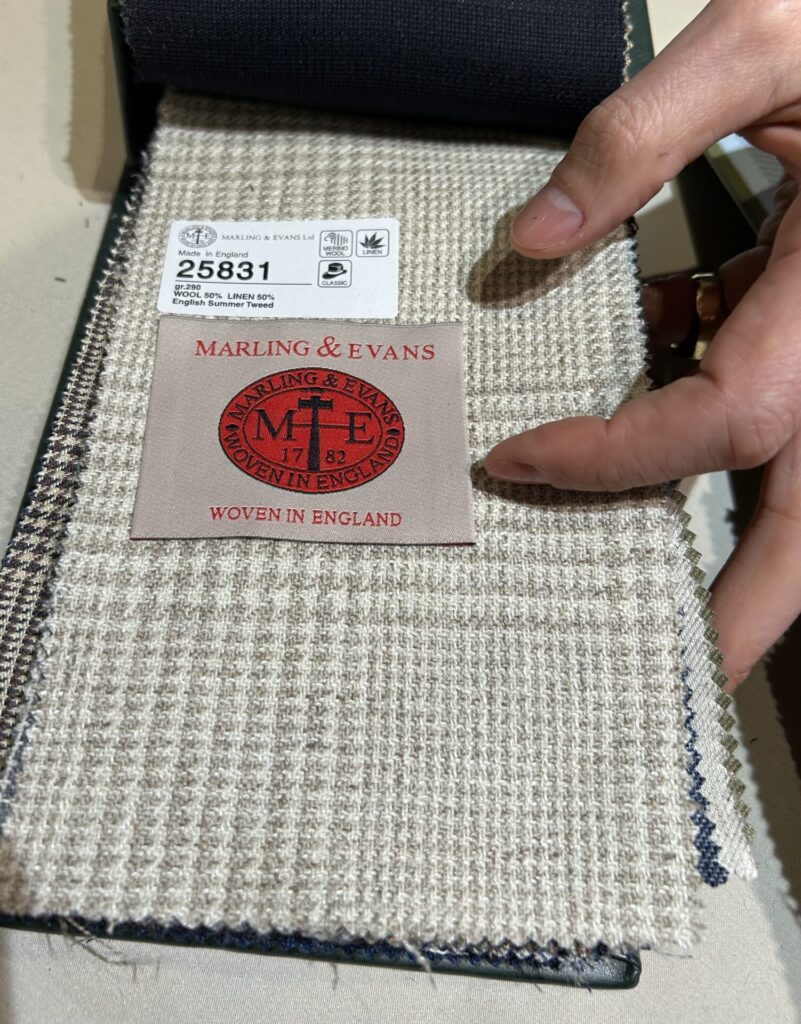
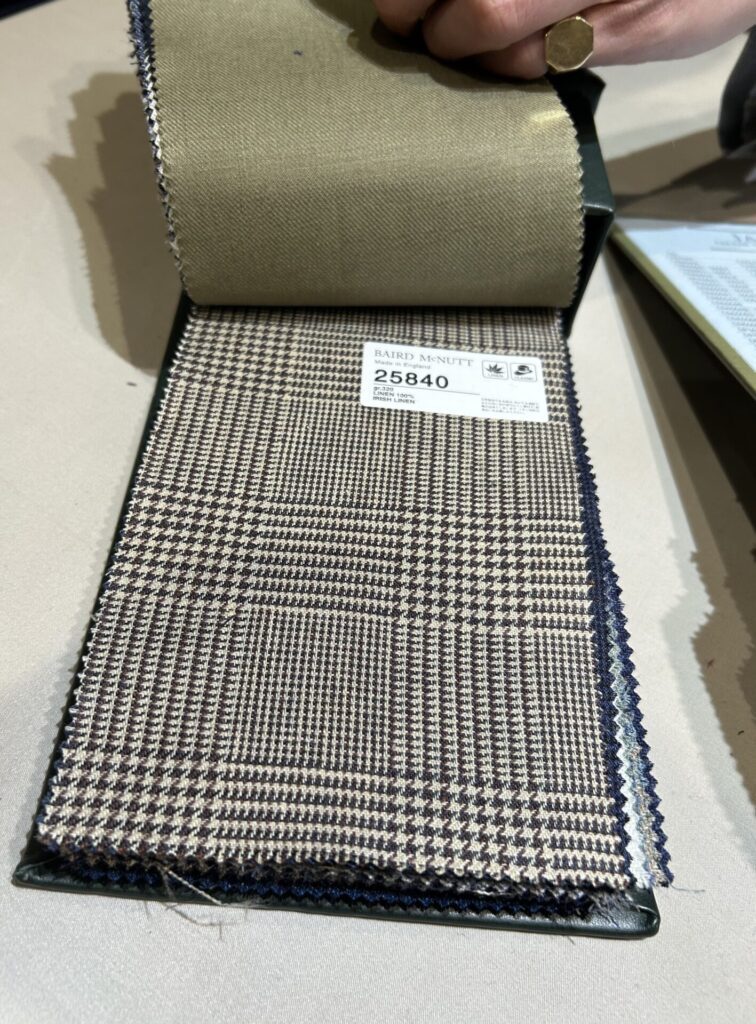
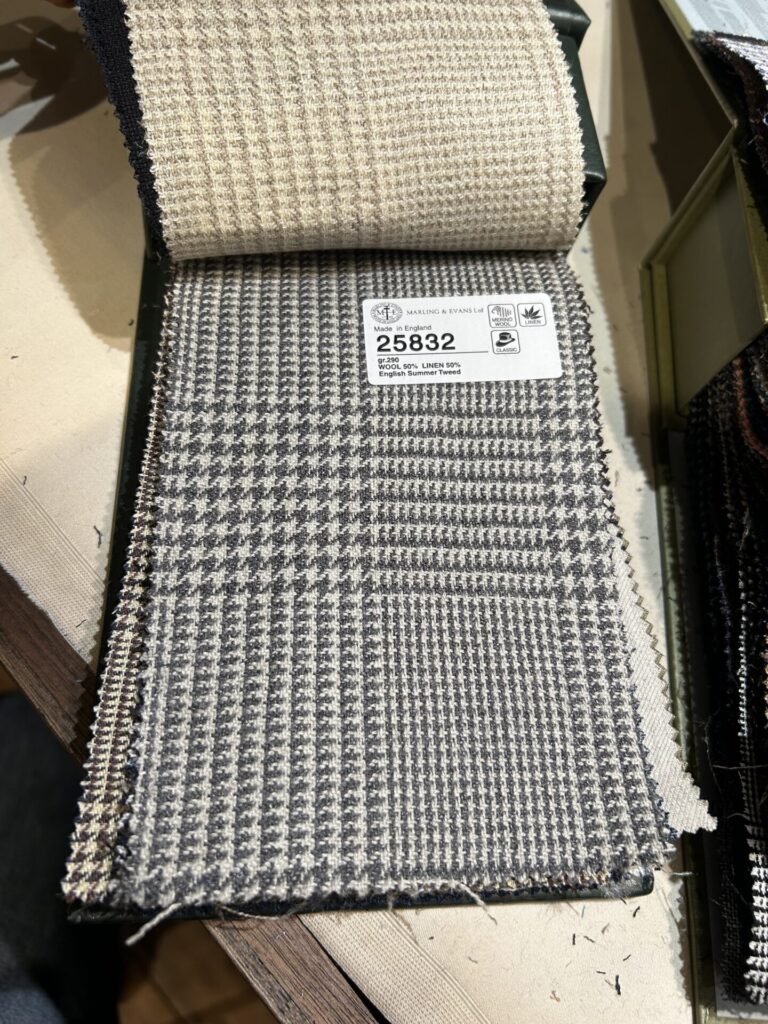
There were pure linens and classic tweeds, but also two-fiber blends like linen–wool and cotton–wool, and three-fiber blends such as linen–cotton–silk or linen–wool–silk.
Although I’ve worn mixed-fiber fabrics before, I had never tried one with silk.
I’ve always had some hesitation toward silk, as I associate it with fragility.
However, if Mr. Saito says it’s good, then I thought maybe it’s time to give it a shot.
After much deliberation, I narrowed it down to two finalists.
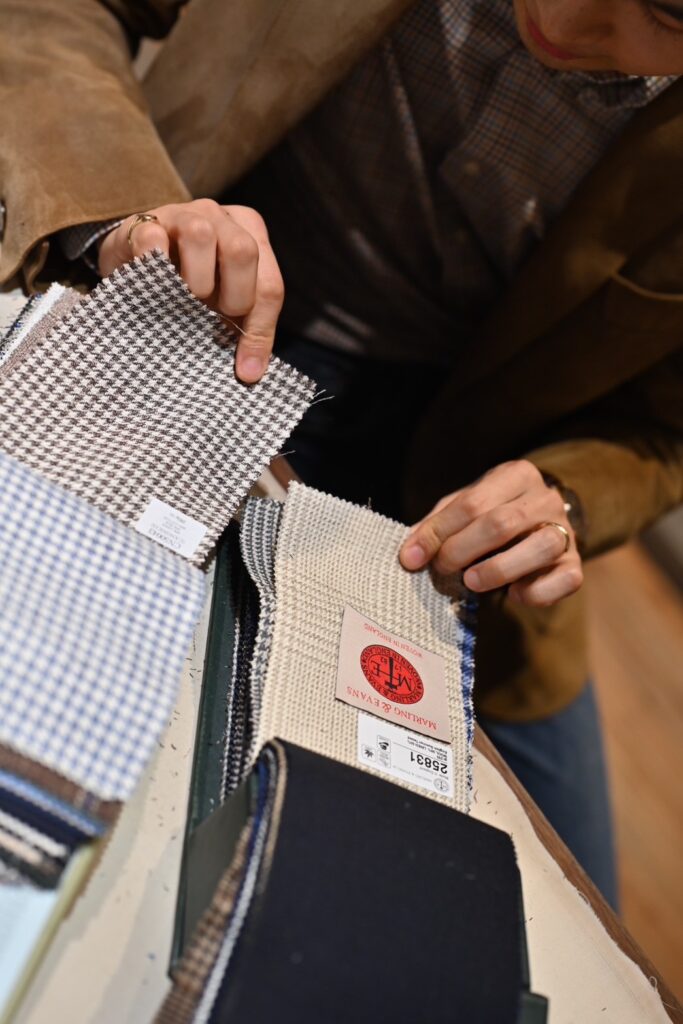
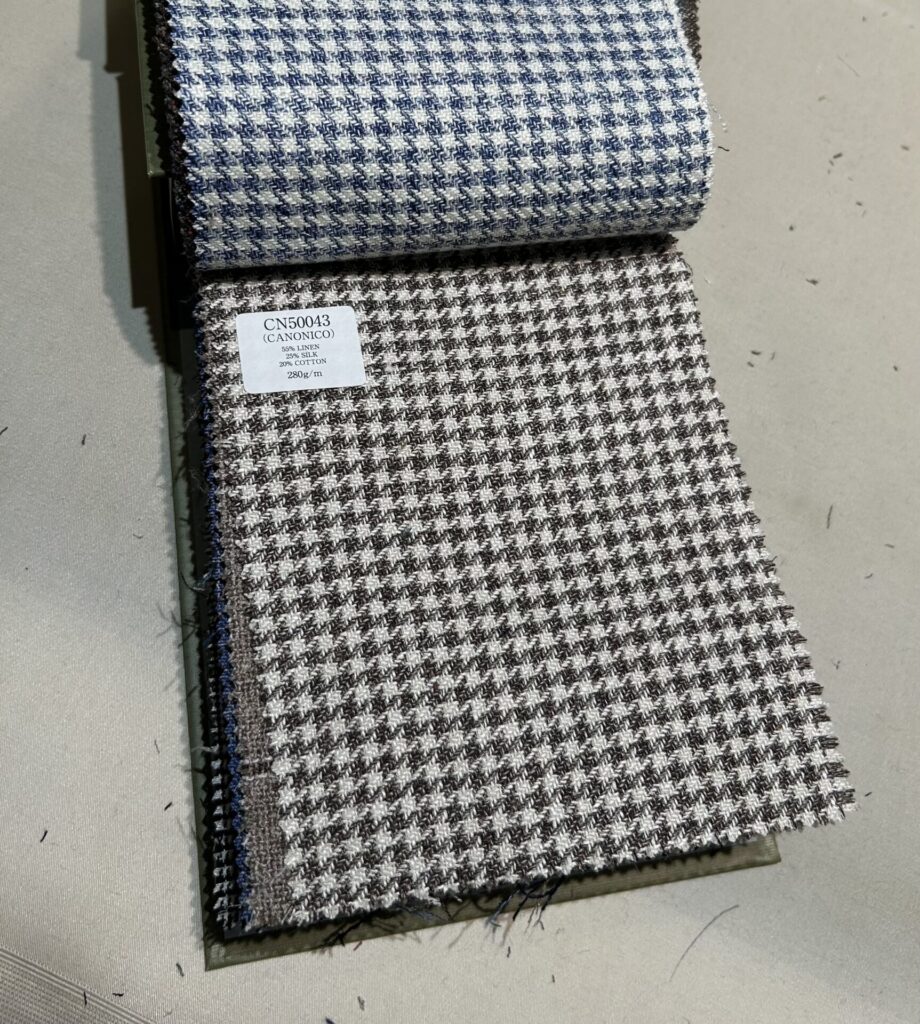
The first contender was a linen–silk–cotton fabric by CANONICO. I found it incredibly charming.
It weighs 280g, making it a spring–summer fabric. Its muted colors and subtle pattern offer excellent versatility. The addition of silk gives it a soft sheen and refined feel.
It strikes a nice balance—the coarseness of linen with the elegance of silk—which makes it seem like a safe way to try silk for the first time.
Though it’s patterned, both the colors and motif are understated, making it easy to pair with various items in a wardrobe.
The other option I especially liked was a linen–wool blend by MARLING & EVANS.
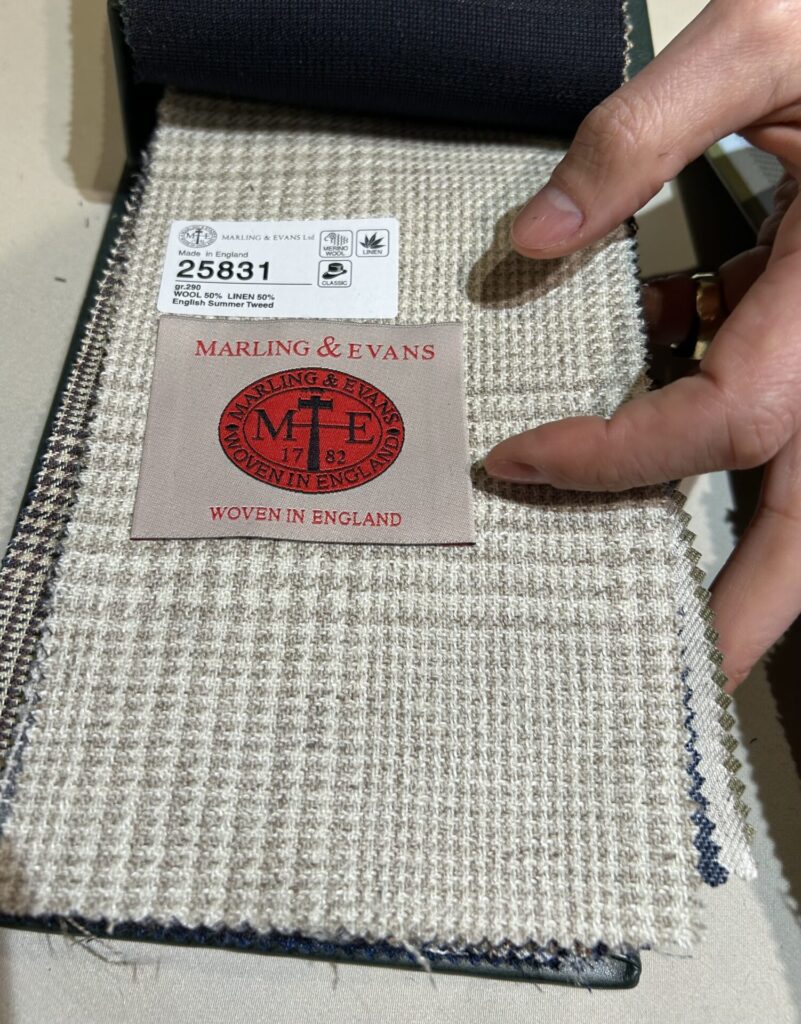
This is a summer tweed—tweed designed for spring and summer wear.。
The name “English Summer Tweed” alone was enough to win me over. I found it immediately appealing.
At 290g, it’s a relatively lightweight fabric. It has a soft yet firm hand—not at all like the stiff, bristly tweeds of fall and winter. The nap is minimal and the texture is crisp without being too rough.
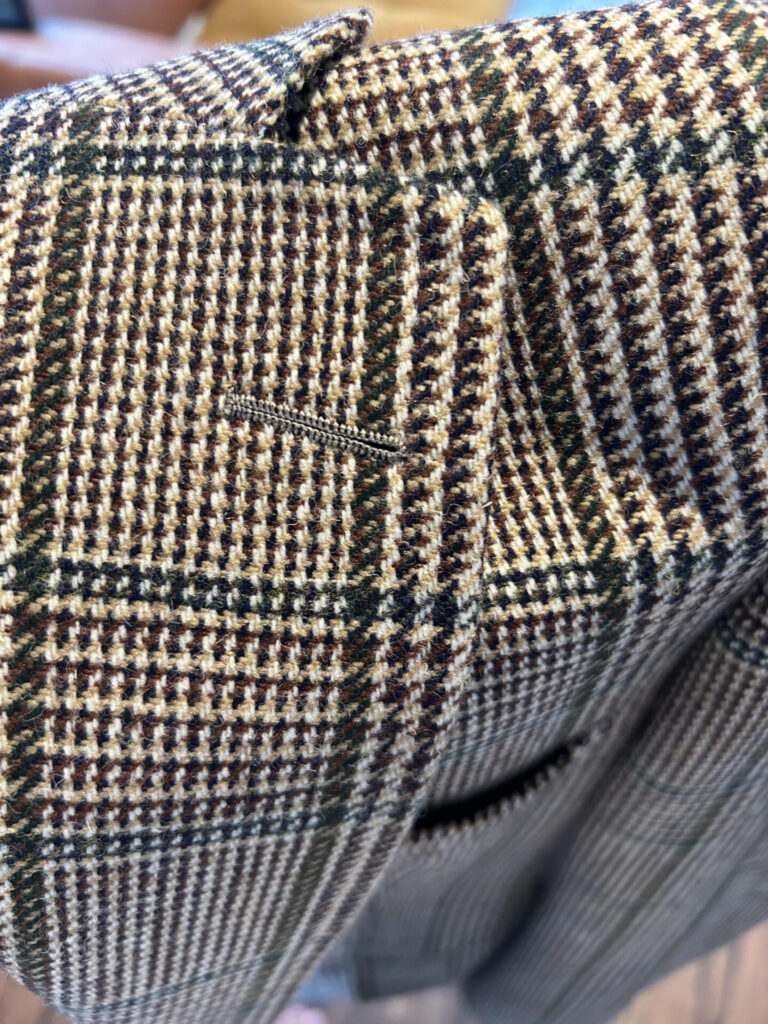
The color palette—beige (greige) and off-white—is both refreshing and elegant.
The cloth has a slightly rugged look, while the coloring adds refinement—a perfect balance.
Here’s an example that evokes a similar impression (image from Ralph Lauren’s Instagram).
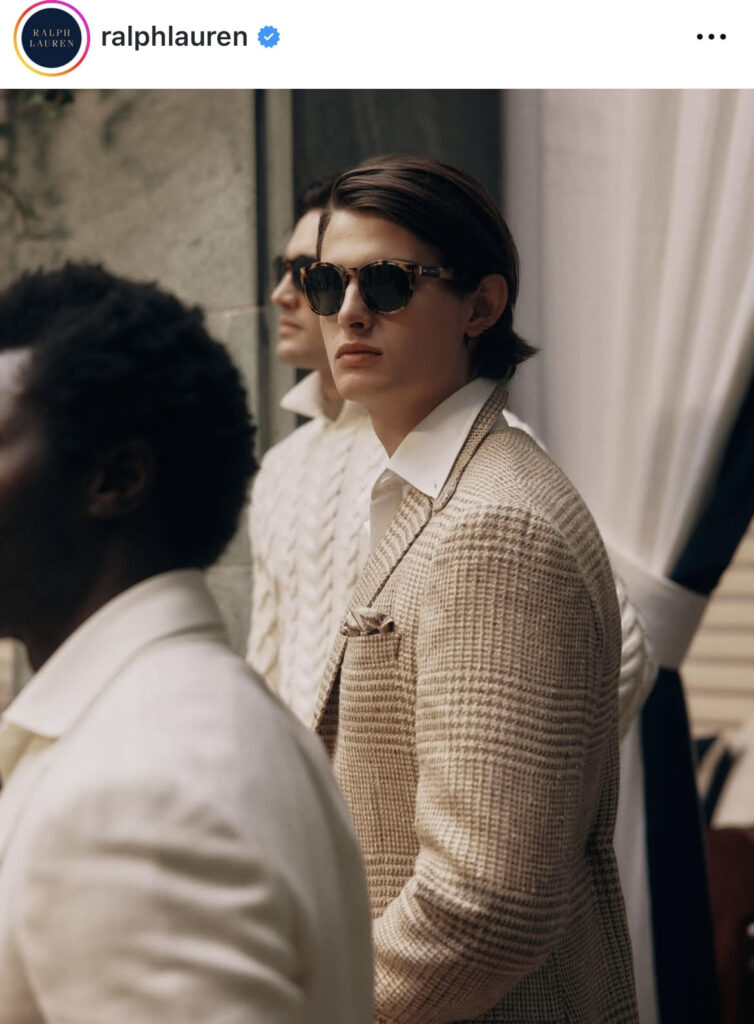
In the end, I chose the MARLING & EVANS summer tweed.
The biggest reason: I wanted to try a fabric known as “summer tweed.” I was curious to see how my favorite materials—linen and tweed—would blend.
Mr. Saito did mention that the CANONICO linen–cotton–silk fabric tends to lose shape over years of wear, which raised some concern.
I guess I’m still not ready to fully embrace silk just yet.
Details
I kept the overall design similar to my previous suit.
Three-roll-two front
Four-button sleeves
Side vents
9.5 cm lapel width
Welted pockets without flaps
No darts beneath the hip pockets
Fully lined
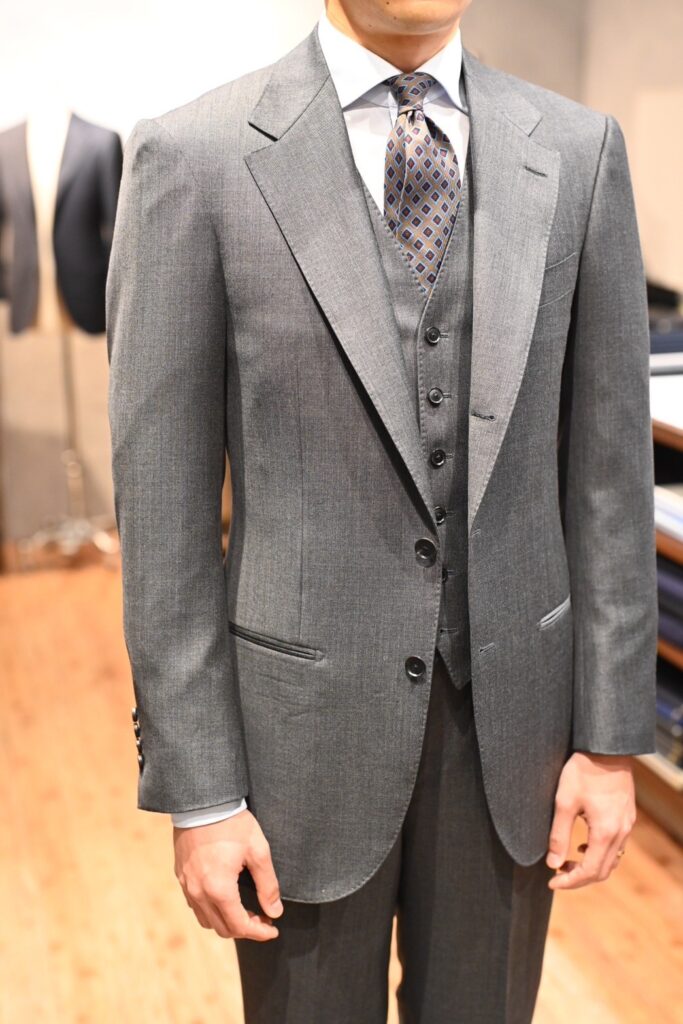
I considered patch pockets, but since the fabric is fairly bold and casual in tone, I chose welted pockets to tone it down a bit.
The only thing I changed was the length—I shortened the jacket by 5mm compared to the suit jacket.
I was told I could go even 1cm shorter, but since I prefer longer silhouettes, I played it safe with just 5mm.
As for the optional tailoring features, I selected the same three out of five options as I did for my suit:
-Increased ease in the shoulder
-Increased ease in the sleeve
-Hand-attached collar construction
-Curved gorge line shaping
-Hand-sewn flower loop (boutonnière)
The added ease in the shoulders and sleeves is for comfort.
I might not notice a huge difference myself, but if I skipped it and later regretted it, I’d never forgive myself. So I think I’ll stick with it for life.
As for the flower hole, I opted for a standard hand-sewn finish rather than a Milanese.
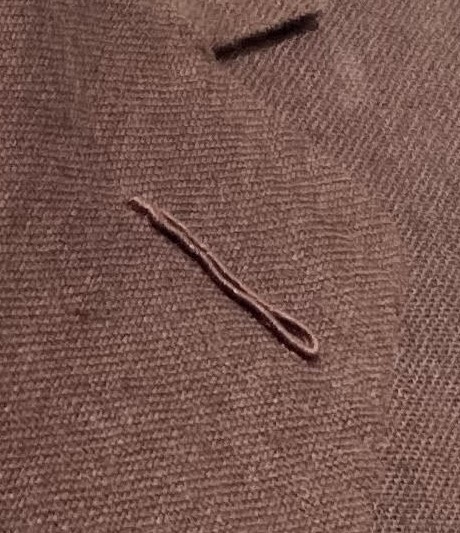
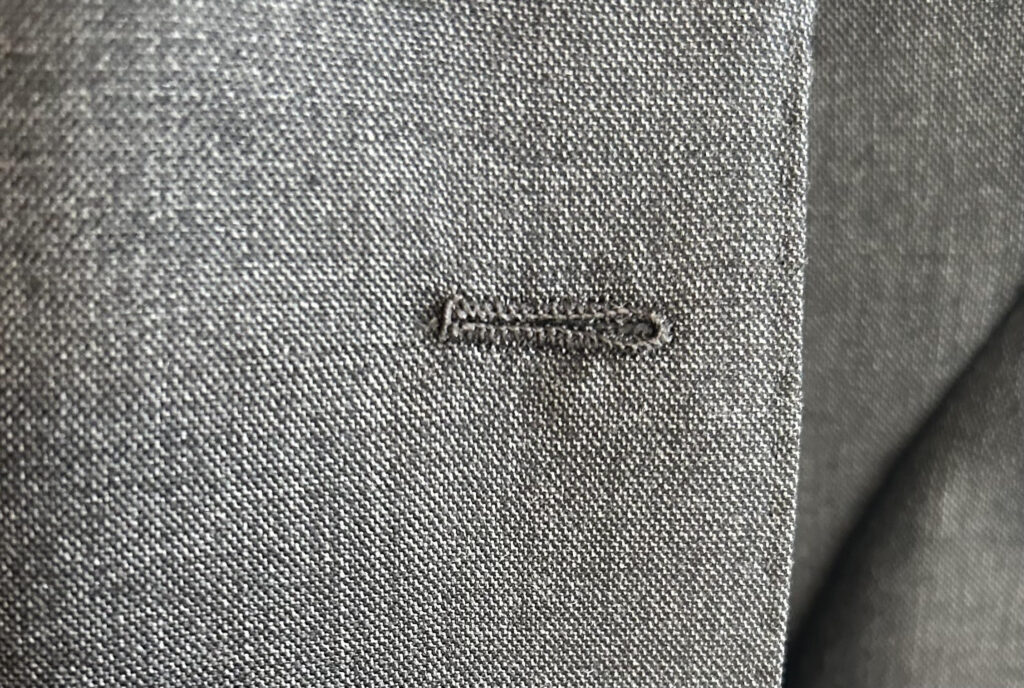
I didn’t want something too flashy, but still wanted the quiet pride of a hand-sewn detail.
Since this jacket is intended for casual wear, I also considered adding a curved gorge line. In the end, I held off.
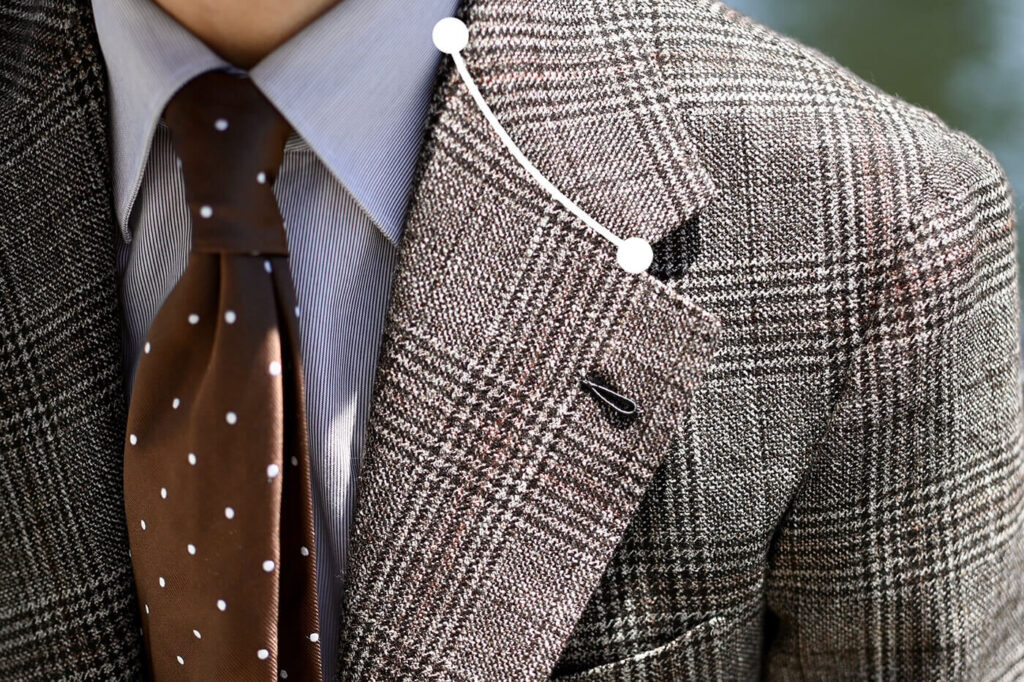
Just like with the flower hole, I felt that a strong “hand-tailored” aesthetic might be a bit too conspicuous for me.
I prefer an understated, almost nationality-neutral look—something that feels natural to anyone, anywhere in the world.
That said, I’ve never tried a curved gorge before, so maybe I’ll test it someday with a subtle curve.
Price
The base price was around 150 000 JPY, plus roughly 30 000 JPY for the three optional tailoring features, bringing the total to about 180 000 JPY. (around 1250 USD)
Incidentally, the CANONICO linen–cotton–silk fabric would’ve cost about the same—just a few thousand yen difference.
Final Thoughts
Of course, this is all based on expectations before the jacket is actually finished—but in terms of both material and pattern, I think this cloth offers excellent versatility.
With linen-based summer tweed, it’s perfect for spring and summer.
A pure linen fabric, though great for warm weather, can look out of place in fall or winter, no matter how comfortable it feels. The slightly brushed finish of this tweed, however, gives it a subtle seasonal ambiguity, which might allow it to be worn in cooler months too—depending on the wearer’s tolerance for cold.
As for the color and pattern: the greige and off-white combination works well with black shoes and monochrome outfits.
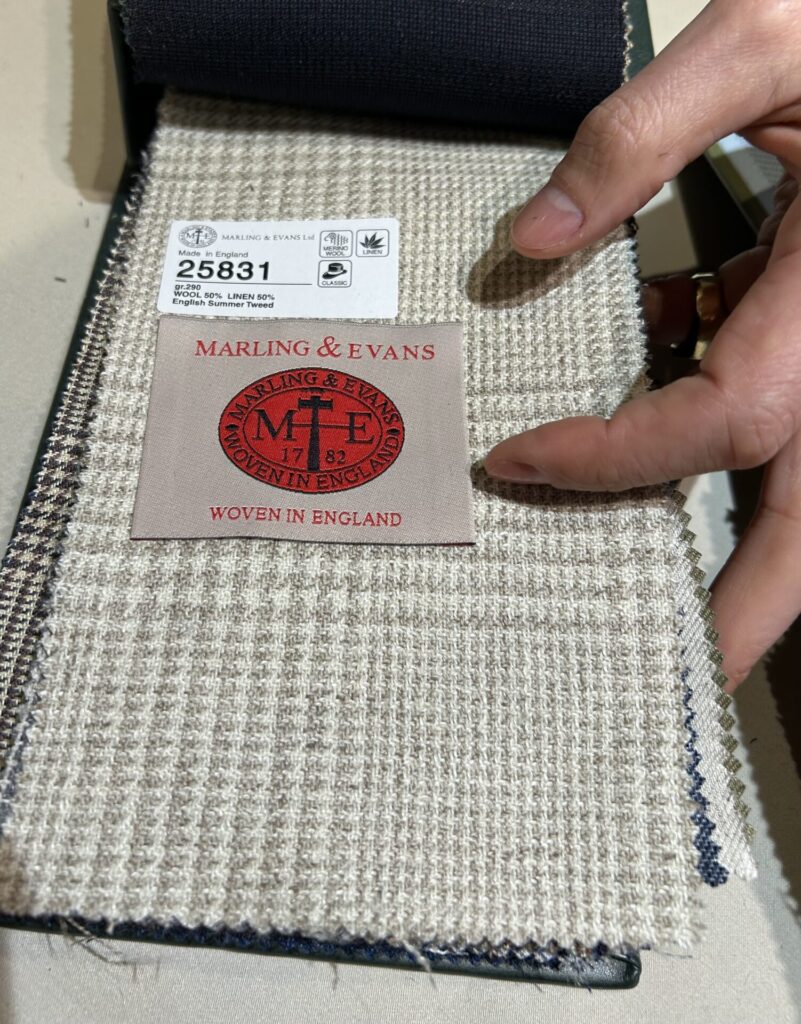
If the beige had been paired with brown instead, black shoes and accessories wouldn’t have been as natural of a match.
But greige and white? No problem at all.
I’m already imagining pairing it with an ink-black linen western shirt, black slacks, or black loafers.
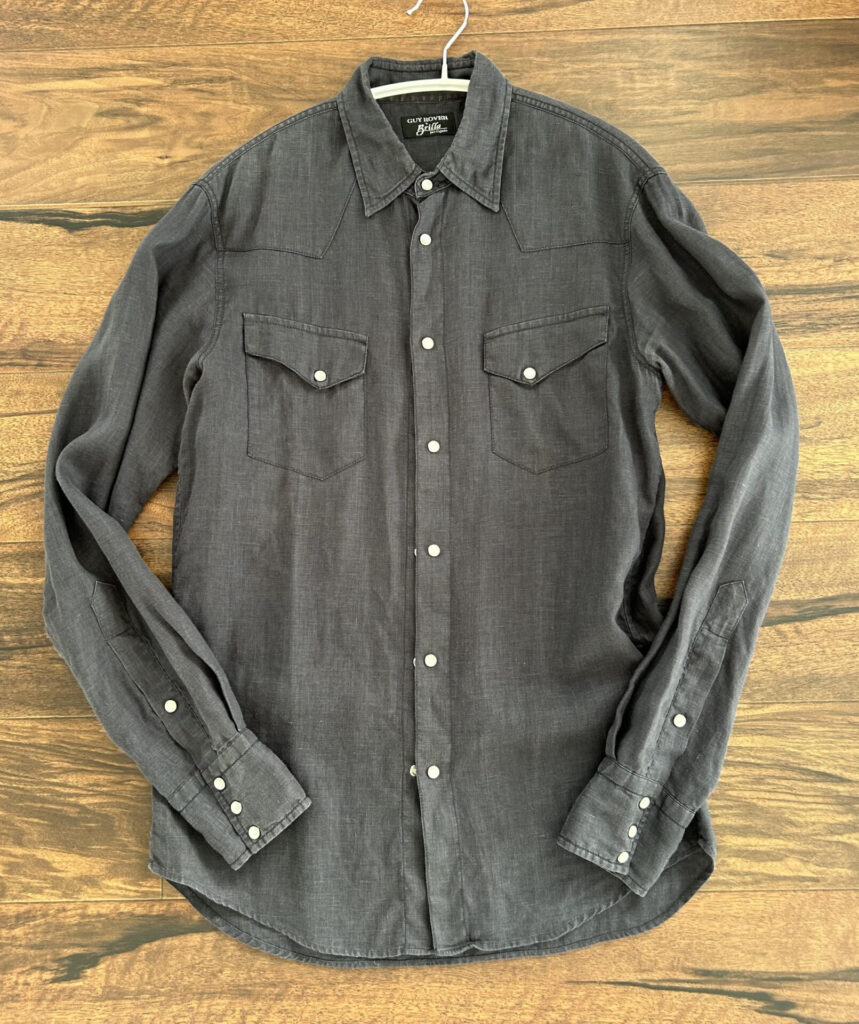
I can’t wait to wear it—but I’ll have to hold out for another two months.
Thank you for reading.
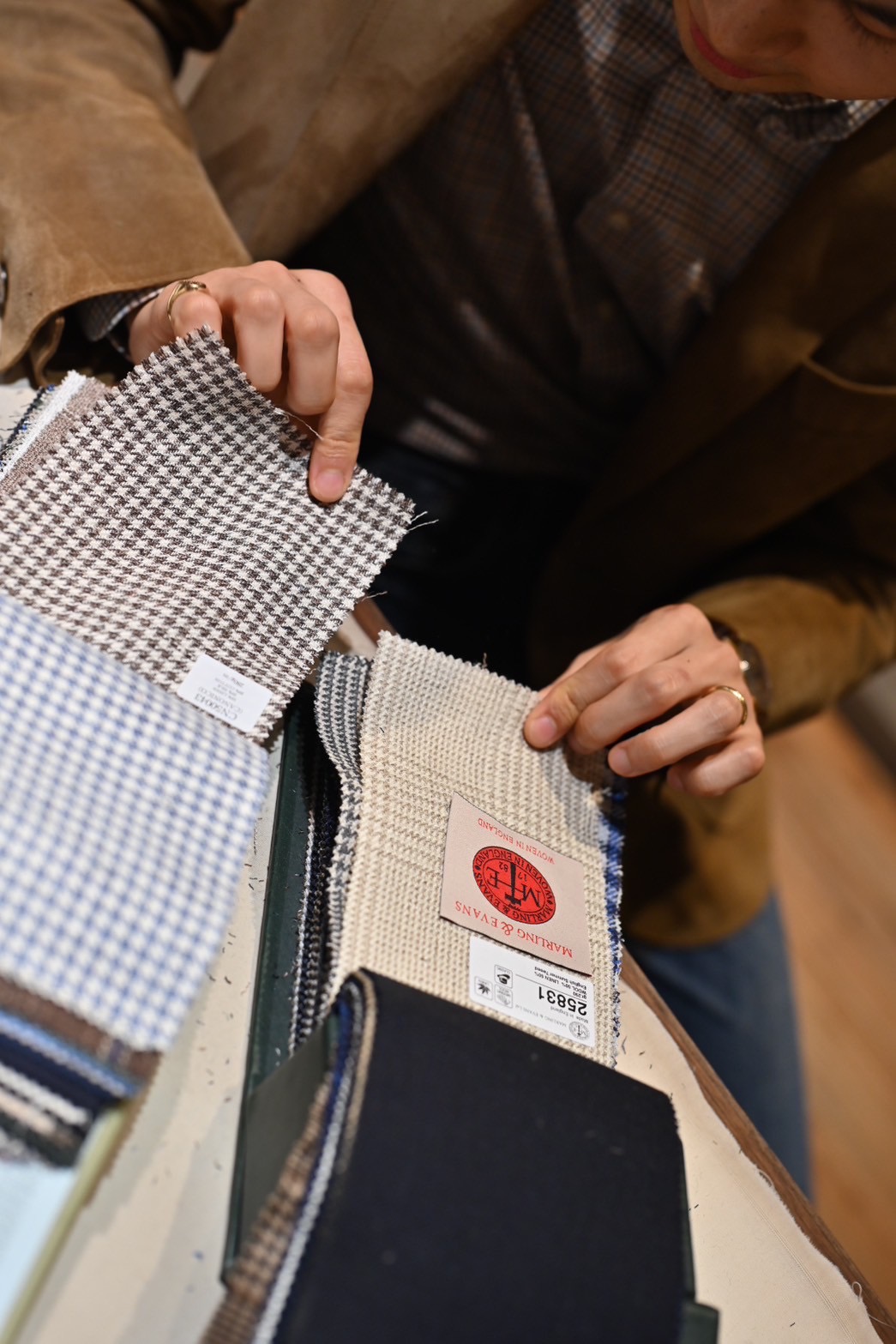







コメント